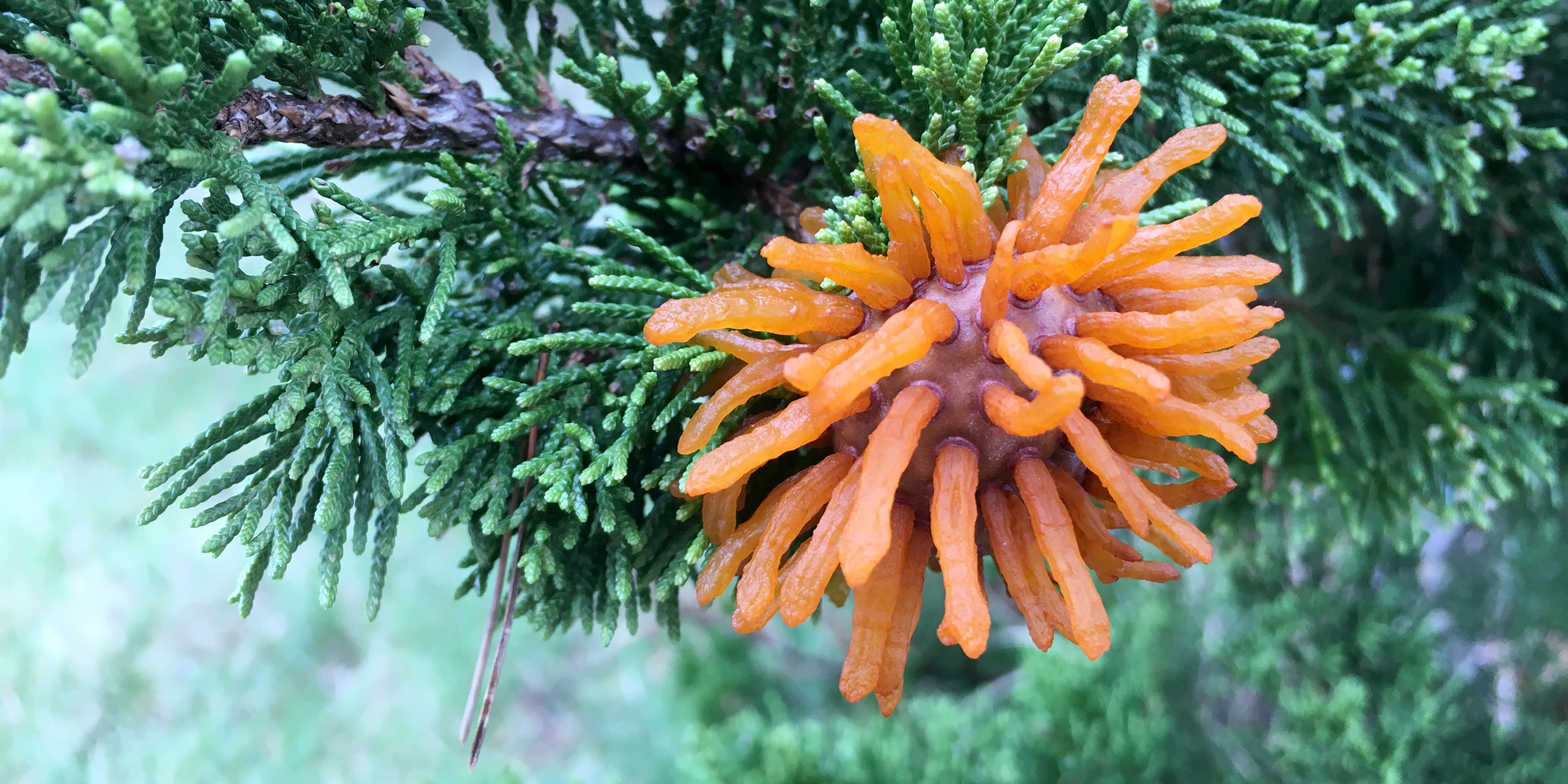Originally published 9 June 1997
“Vital dust.” That’s what Nobel Prize-winning biologist Christian de Duve titles his book on the origin and evolution of life.
He means several things by the title. First, that life begins and perhaps flourishes throughout the universe as microscopically small organisms. Second, that life is chemical. Third, that the original stuff of the universe — the primeval dust — bore within it the potentiality, even the certainty, of becoming animate.
His title also reminds us that we live in a sea of animated dust: invisible spores swimming on the wind. We breathe these seeds of life in and out with every breath. Rusts. Smuts. Molds. Mildews. Mosses. Mushrooms. Ferns.
Given the quantity and variety of airborne reproductive germs, it might seem likely that our lungs would become gardens of foreign organisms — the invasion of the body snatchers. But that’s not quite the way life works. Most airborne spores must alight in a highly specific environment if they are to bear fruit.
Consider, for example, the cedar-apple rust.
For more than 30 years I have walked the same path back and forth to work through woods and meadows. Most of what I see is familiar. The same plants return year by year to the same places. The same birds nest in the same trees. The same insects take wing in the same climates and seasons.
Still, it’s the rare week that my walk doesn’t offer a surprise, something I haven’t seen before. A coyote. A kingfisher. A wild columbine. A stinkhorn mushroom. Thirty years is not nearly enough time to exhaust the astonishing diversity of life, even in our tame backyards.
A few weeks ago, on a wet May morning, a spot of bright orange caught my eye in a cedar tree across the meadow. At first I thought I was seeing an oriole — then two, then three. I brought out my binoculars and the tree exploded with bulbs of orange, as if it had been decorated for Christmas.
Close inspection revealed dozens of reddish-brown fleshy growths, round or liver-shaped, attached to leaves. Each of these growths sprouted a mass of gelatinous orange tentacles, like some horrid fungal colony of the forest floor, or a sea anemone. Some of these masses of tentacles were as large as grapefruits.
I had never seen anything like them — part insect gall, part mushroom — almost extraterrestrial in the way they seemed to have taken over the cedars.
A little research provided an identification. The tentacled spheres were the fruiting bodies of cedar apple rust, caused by the fungus Gymnosporangium juniperi-virginianae.
How did this apparition come to be? Start in the springtime, on a nearby apple tree. Small yellow dots develop on the underside of the leaf shortly after the tree comes into bloom. The yellow spots gradually enlarge and become orange. Then black spots appear on the upper leaf surface. In late summer, small tubes grow on the lower leaf surface near the orange spots, and brown spots may develop on fruit.
The orange spots release spores that are distributed by the wind. If they fall upon a cedar tree, they germinate and put out tubes that penetrate the tiny leaves. By some chemical magic, these tubes cause the growth of fleshy, reddish-brown galls, called cedar apples. The development of the galls and the maturing of the fungus within them require nearly two years from the time of infection.
Then, during wet weather in May, the galls put out long orange tentacles, slimy and gelatinous. These are composed of spores of a different sort, which make their way by wind back to an apple tree. The cedar tree and the apple tree are necessary alternate hosts to the fungal parasite.
Generally, only apple growers are concerned about these details of the cedar apple rust’s life cycle. But the story is an extraordinary parable of the interwoven texture of life: All those spores, at different stages of the fungus’s life cycle, wafting back and forth at the mercy of the breezes, utterly dependent upon making an appropriate landing on a specific plant.
And this is only a sketch of the story, leaving out the wonderful chemical details. A complete molecule-by-molecule description of the life cycle of cedar apple rust would fill a book, if it were known at all. For Christian de Duve, the author of Vital Dust, the life cycle of the Gymnosporangium juniperi-virginianae fungus would be just one more example of a life force that is deeply embedded in the creation, a “cosmic imperative,” he calls it.
He writes: “The history of life on Earth allows less leeway to contingency and unpredictability than current fashion [in science] claims.” There is accident in the details, he believes, but inevitability in the grand thrust towards chemical complexity.
Christian de Duve is right. Life is too diverse, resilient, and pervasive not to have been built in from the beginning, at least in broad outline.
You’d have to see a cedar tree full of orange-tentacled galls to dream that such a thing could exist, almost otherworldly in its dissimilarity to anything else in our local environment. After I had done my research, I returned to the meadow — and stood there shaking my head with awestruck astonishment.
Vital dust!



